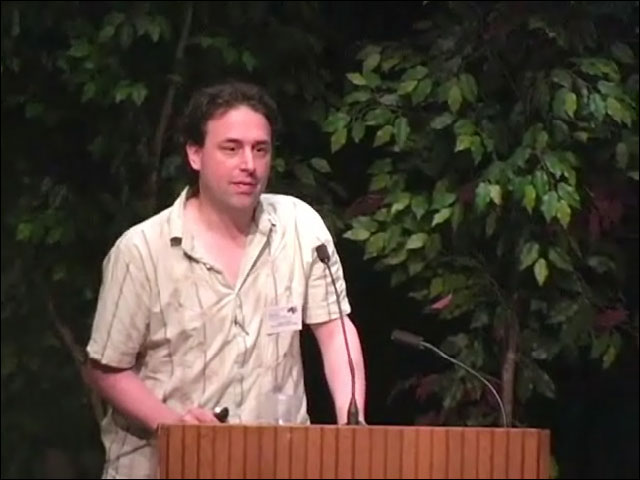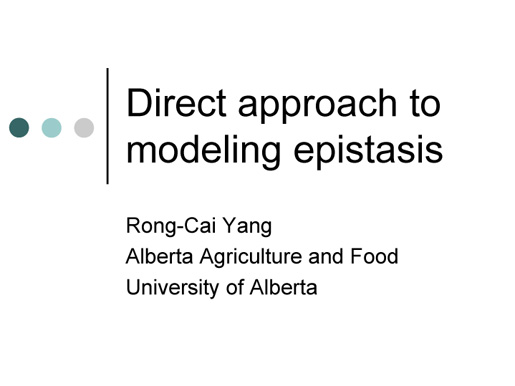| 2007 Epistasis Symposium: {author} | - Hide additional videos |

Lilach Hadany, University of Iowa
Adaptation in epistatic genetic systems: the role of variation in variation and selection

Mihaela Pavlicev, Washington University
The contribution of differential epistasis to the variation in pleiotropy

Suzannah Rutherford, Fred Hutchinson Cancer Research Center
Threshold trait architecture of Hsp90-buffered variation

Laura Galloway, University of Virginia
Epistasis between generations: The influence of maternal-offspring interactions on life history evolution of an herbaceous plant

Yi Jia, Iowa State University
Genetic control of the transcription of Natural Antisense Transcripts (NATS) in maize

Robert Heckendorn, University of Idaho
Testing the structure of naturally occurring epistasis and the limited epistasis hypothesis





















